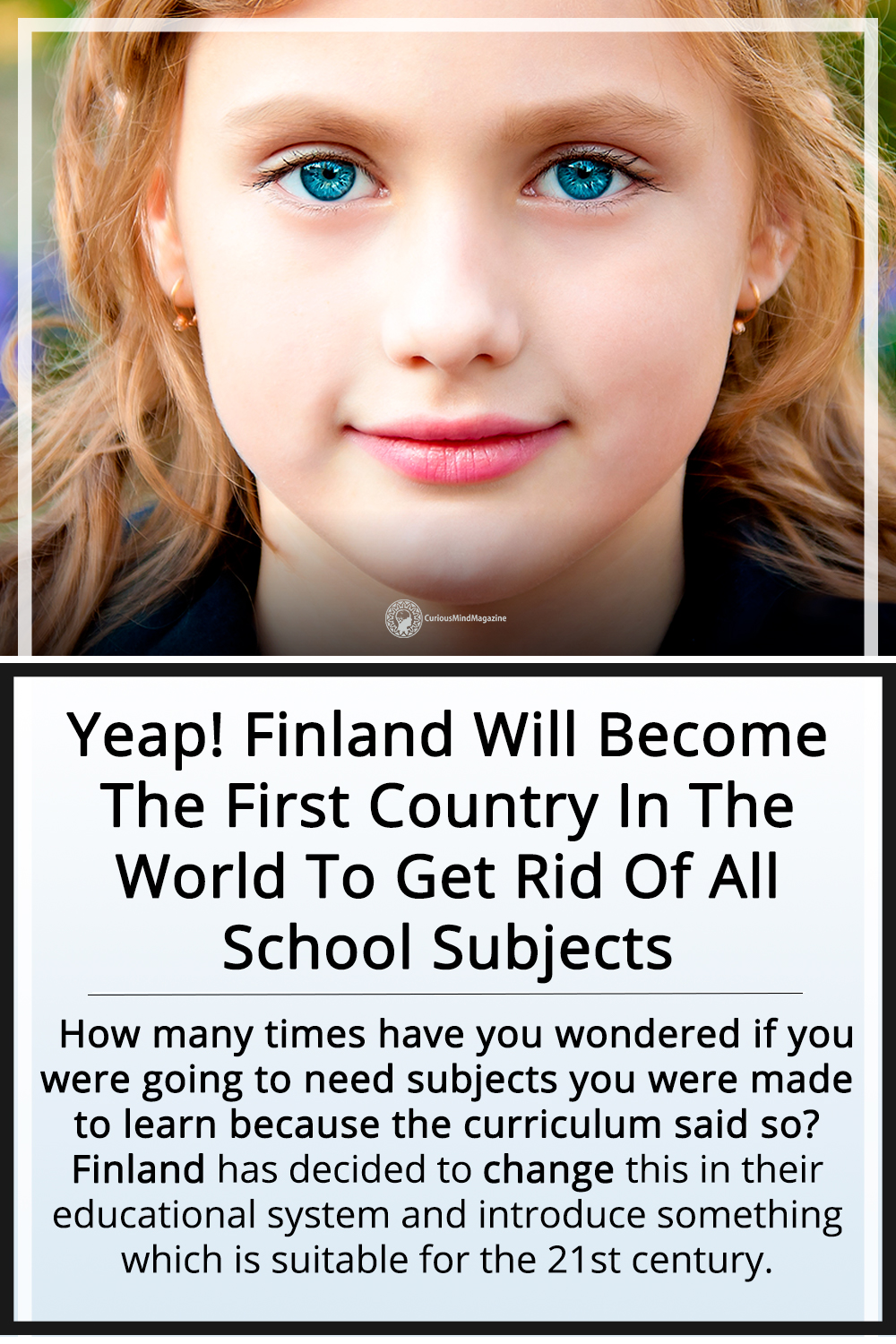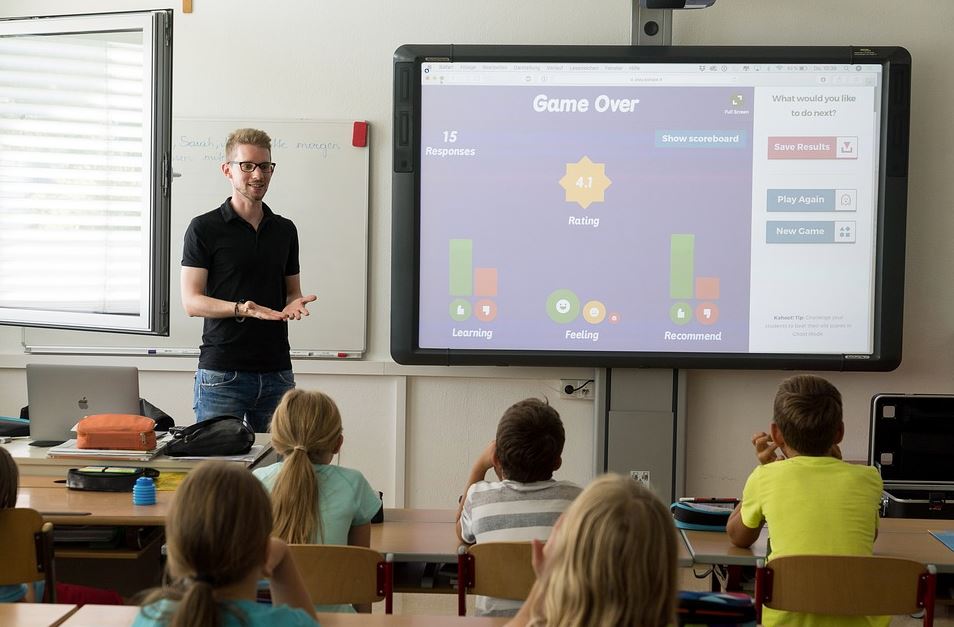In an era of technology and easily accessible information, our schools still expect us to know everything from the books without considering whether this is going to be what we will actually need in our professional development.
How often have you wondered if you were going to need subjects you were made to learn because the curriculum said so? Finland has decided to change this in their educational system and introduce something suitable for the 21st century.
Instead of classes in physics, math, literature, history, or geography, Finland has introduced a different approach to life through education. Welcome to phenomenon-based learning!
As Phenomenal Education states on their website, “In Phenomenon Based Learning (PhenoBL) and teaching, holistic, real-world phenomena provide the starting point for learning. The phenomena are studied as complete entities, in their real context, and the information and skills related to them are studied by crossing the boundaries between subjects.”
This means that instead of learning physics (or any other subject) for the sake of learning it, the students are given the opportunity to choose from phenomena from their real surroundings and the world, such as Media and Technology or the European Union.
These phenomena are studied through an interdisciplinary approach, which means that only those subjects (and only parts of them) that contribute to excelling in the topic are included.
For example, a student who wants to study a vocational course can take “cafeteria services,” and the phenomenon will be studied through elements of maths, languages, writing, and communication skills. Another example is the European Union, which includes economics, languages, geography, and the history of the countries involved.
Now take your profession as an example and think of all the information you need to know connected to it – you are now thinking the PhenoBL way!
This kind of learning includes both face-to-face and online sessions, with a strong emphasis on the beneficial use of technology and the Internet through the process of eLearning. You can read more about it here.
In the learning process, the students can collaborate with their peers and teachers through sharing information and collectively exploring and implementing new information as a building tool.
The teaching style has changed too!
Instead of the traditional teacher-centered learning style, with students sitting behind their desks and recording every instruction given by the teacher, the approach has been changed to a holistic level. This means that every phenomenon is approached most suitably and naturally possible.
However, as Phenomenal Learning states, “The starting point of phenomenal-based teaching is constructivism, in which learners are seen as active knowledge builders and information is seen as being constructed as a result of problem-solving, constructed out of ‘little pieces’ into a whole that suits the situation in which it is used at the time.”
This education system tends to include learning in a collaborative setting (e.g., teamwork), where they like to see information being formed in a social context instead of it being seen only as an internal element of an individual.
This approach supports inquiry-based learning, problem-solution, and project and portfolio learning. The last step is practical implementation, being seen as the outcome of the whole process.
This reform requires a lot of cooperation between teachers of different subjects.
Co-teaching is at the base of the curriculum creation, with input from more than one subject specialist, and teachers who embrace this new teaching style receive a slight increase in their salary as a sign of recognition.
From a teaching perspective, this style is very rewarding and worthwhile for the teachers too. However, some teachers, who have already implemented this style in their work, say that they cannot go back to the old style.
This is not surprising, as the interaction in this teaching style is something every teacher has always dreamed of.
A similar approach called the Playful Learning Centre was used in the preschool sector, and it served as a starting point for phenomenal-based learning.
What Education System Does Finland Use?
In Finland, the education policy is formulated by the Ministry of Education and Culture, whereas the Finnish National Agency for Education is responsible for implementing the policy.
The Finnish education system consists of early childhood education, basic education, upper secondary education, and higher education. In addition, it offers adult education.
Early Childhood Education and Care (ECEC)
The objective of ECEC is to support the well-being, development as well as learning of children aged 0-5. ECEC also emphasizes the importance of outdoor activities positively affecting children’s well-being.
Before a child starts their primary education, they receive pre-primary education, which is free and lasts for one year, when they turn 6. In this level of education, children engage in outdoor activities and learn basic skills, such as reading.
Basic Education
This level of education is where compulsory education starts for children aged 7-16. The objective of basic education is to help the student become an ethically responsible person and provide them with the important skills and knowledge they need in life.
Upper Secondary Education
Once students have completed the primary education stage, they can opt for receiving vocational or general education. The difference between these two is that Vocational Education provides students with the basic skills needed in the field they’ve chosen by assigning them to workplaces via a training or apprenticeship agreement.
Higher Education
At this level of education, the academic institutions are divided into Universities of Applied Sciences and regular universities. In regular universities, the bachelor’s degree can be completed in three years, whereas the master’s program in two years. The degrees can be completed in 3.5 -4.5 years in the Universities of Applied Sciences.
Adult Education
This stage of education is included to provide adult learners with an education that leads to apprenticeship training, qualification, studies in various crafts, and degree studies.
Finland Education System Facts
· The Finnish school system is completely funded by the state.
· Teachers in Finland spend approximately 4 hours a day teaching students in the classroom. They spend 2 hours every week working on their professional development.
· Every Finnish teacher holds a master’s degree.
· Teachers, lawyers, and doctors have an equal status in Finland.
· The Finnish grading system is designed by the teachers themselves. Students’ learning and performance are assessed individually without using standardized tests and exams.
· The only compulsory test students in Finland give is when they turn 16.
· Students spend just 20 hours a week at school in Finland.
· Finnish students have the opportunity to learn different new things in schools, such as poetry, music, art, industrial works, and baking.
· Finnish students are required to do less homework.
· Finish students can speak two to three languages.
· Students in Finland are offered special services in accordance with their requirements and needs.
· In Finland, when a student spends 45 minutes learning in school, they are allowed to spend 15 minutes engaging in leisure activities or playing.
· The Finnish schools encourage and nurture the teacher-student relationship.
· The starting salary of teachers is around $29,000.
Why Is Finland’s Education System Considered The Best?
Finland’s education system is considered the best in the world due to the repeated success of the students of this country in national education rankings. For instance, in 2o15, they won 4th place in reading, 12th place in mathematics, and 5th place in science.
Finland has the best education system because it offers a unique education model. Unlike most classrooms in countries around the world, classrooms in Finland are learner-centered, where students have the opportunity to assess their abilities by themselves. Finish students also work in teams on projects and actively participate in creating their own learning activities.
Another reason why Finland’s education system is unique is that all students in all schools are offered free welfare services, complimentary lunches as well as support. In addition, the Finnish schools provide students with psychological counseling, health services, healthy, free meals as well as student guidance.
Moreover, Finland has a unique education policy that prioritizes raising participation and quality and creating equal opportunities within every level of education. As a result, every citizen is provided with an equal opportunity for high-quality training and education.
Internationalization, quality, equity, and efficiency are four principles that characterize the Finnish education policy.
In addition to offering equal opportunities to every citizen for education, the objective of Finnish education policies is to increase student achievement. To help students fulfill the goals of schooling, schools have designed instructional content, established effective teaching methods, created optimal learning environments, and individualized teaching. All this has led to equitable and high-quality student learning.
What’s also characteristic of the Finnish education system is that more emphasis is placed on learning than on testing. Teachers assess students’ learning and performance on the basis of the objectives which the curriculum includes. Students participate in a national examination only at the end of upper secondary education.
Another thing that makes Finland’s education system stand out from the rest is the fact that most education is funded publically. Tuition fees are excluded from every education level. In addition, students don’t need to pay for school meals, school materials, and commuting in basic education. It’s in upper secondary education that students need to pay for commuting and books. Moreover, the education system offers study loans and grants.
To sum up, Finland’s education system is considered the best in the world due to the following 10 reasons:
1. It implements holistic learning and teaching environment.
2. Finnish citizens have free access to education.
3. Instead of using standardized tests, teachers assess students’ learning and performance individually by using a grading system that they design themselves.
4. Only teachers who hold a master’s degree are eligible for teaching positions.
5. Children in Finland start their schooling at the age of 7.
6. There are more professional options for those students who plan for a college education.
7. Instead of competing against each other, academic institutions cooperate.
8. Cooperation is fostered over the competition in schools too.
9. Finnish students are given the scope and time to create the basics and best foundation.
10. Finland’s education system includes only nine years of compulsory education.
Is Schooling Free In Finland?
In addition to offering high-quality education, this country offers free education for students coming from the European Union and European Economic Area (EEA). Students that come from Switzerland and EU/EEA countries and are enrolled at universities for applied sciences and regular universities don’t need to pay tuition fees. Students that don’t come from EU/EEA countries are required to pay the tuition fees. They are required to pay around EUR 6,000 to EUR 18,000 a year. However, international students in Finland don’t need to pay for programs taught in Swedish or Finnish.
Finland’s Education System Ranking
Here’s why this country offers the best opportunities for studying:
· Finland is in the third position in the world as the most educated country.
· Finland is ranked the highest in High School Completion Rate.
· In 2021, Finland was ranked third in education by Countries.
· Finland’s education system is ranked as being the most developed in the world by the World Economic Forum’s Global Competitive study.
Sources And References
- Finland Education System
- Introduction to Finland Education
- Finland Shows Us What Equal Opportunity Looks Like
Please Share

A professional writer with over a decade of incessant writing skills. Her topics of interest and expertise range from health, nutrition and psychology.






